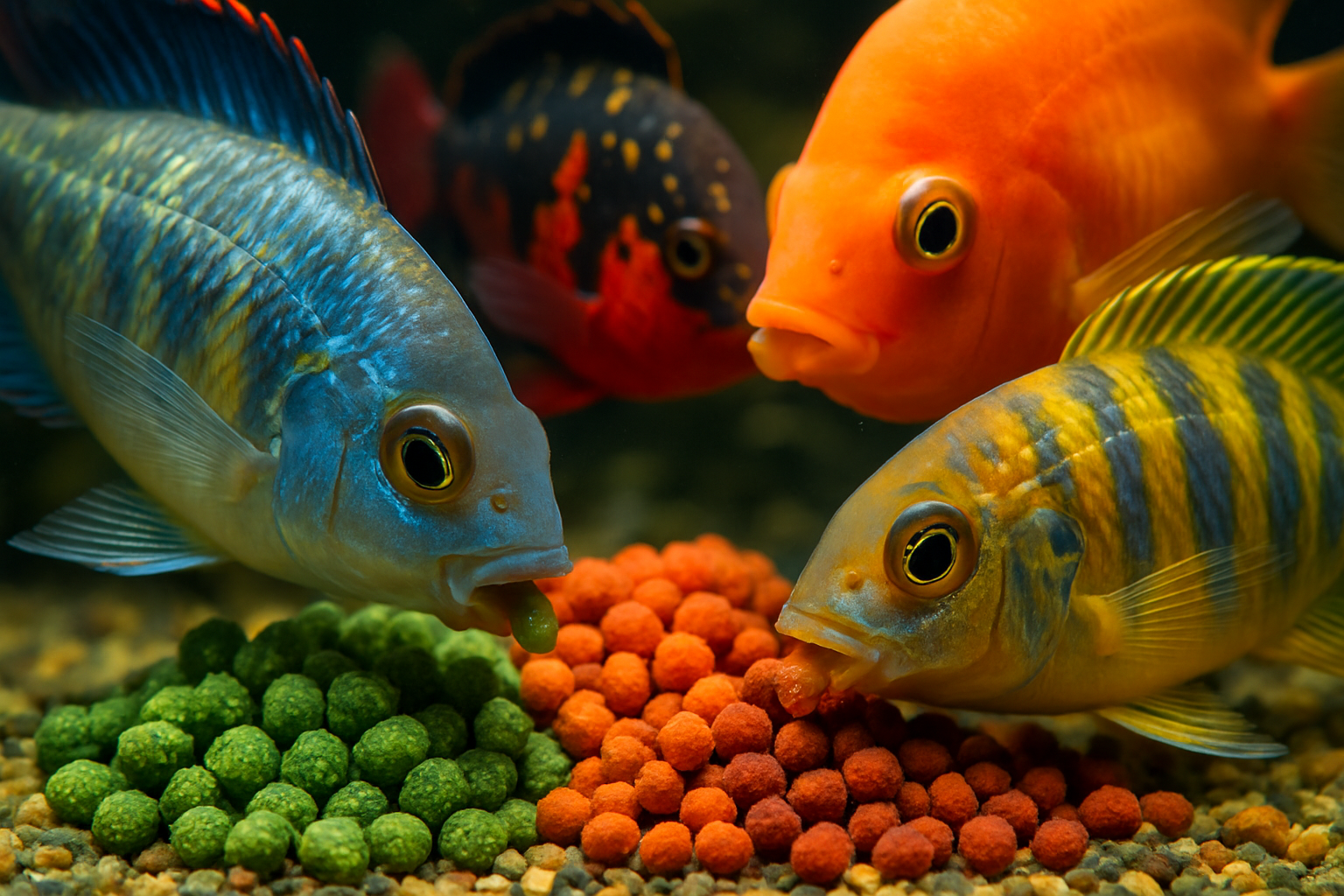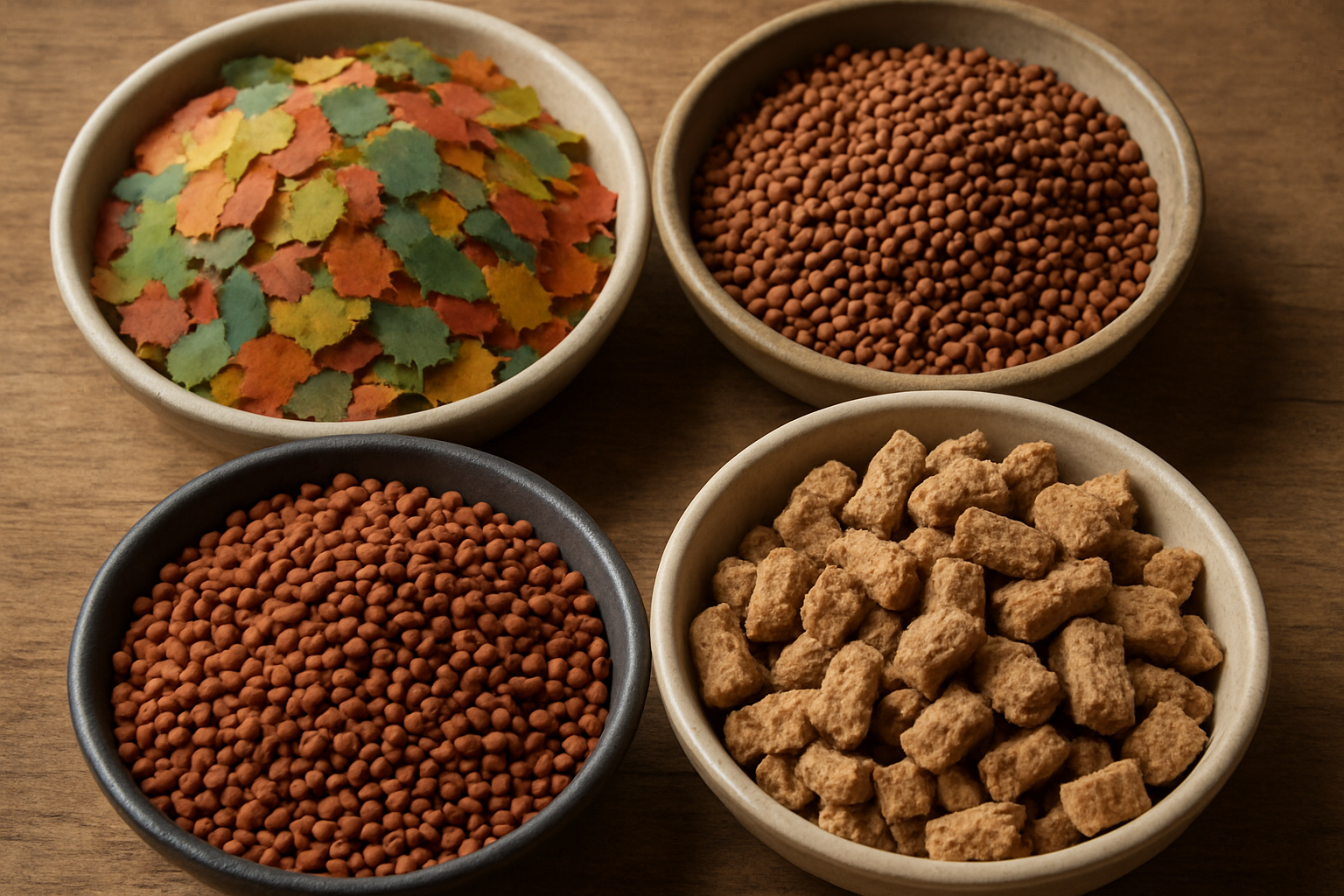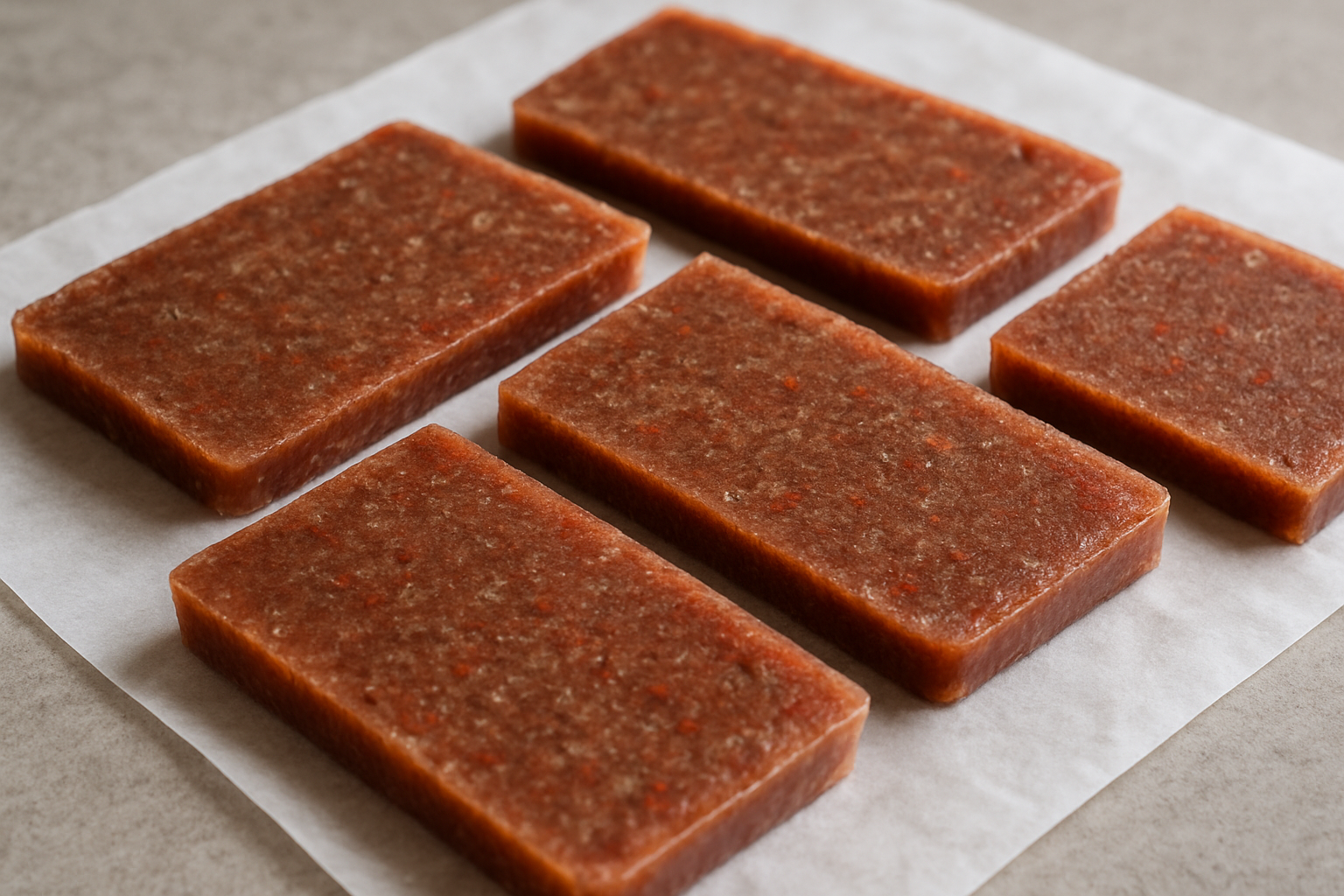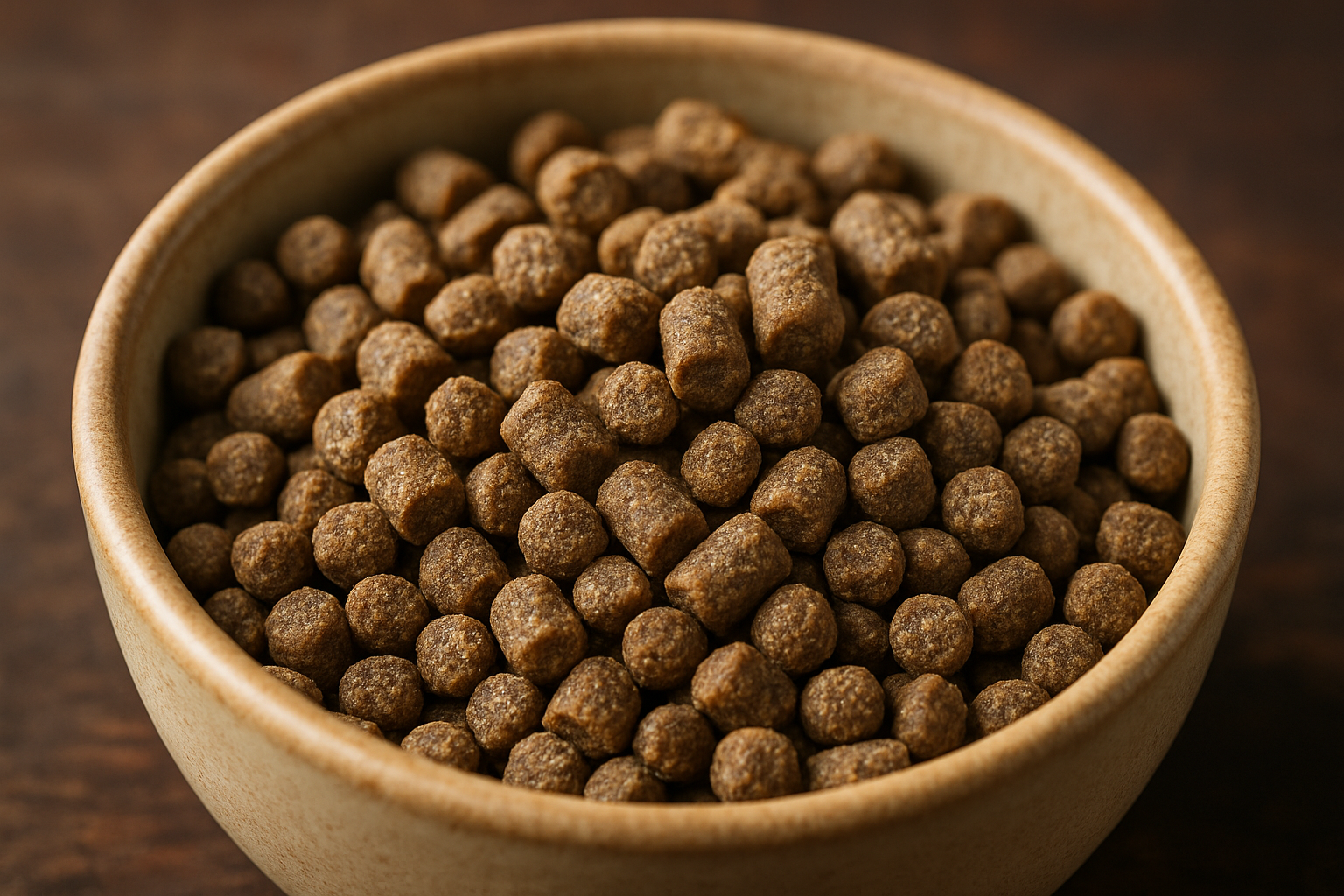Fish food is essential for the health and vitality of your aquatic pets.
But what exactly makes fish food right for your fish?
This guide covers the complete essentials of fish food — from choosing the right type to making your own homemade options.
Some are specially formulated to meet carnivorous, herbivorous, or omnivorous dietary needs.
Some are made from high-protein, sustainable insect-based ingredients.
Some require understanding fish feeding zones to ensure everyone in your tank is fed appropriately.
Some hobbyists even craft their own nutritious gel foods at home.
Some foods can impact fish immune health, so quality matters.
Let's dive right in.
Table of Contents
- Understanding Fish Food Nutrition
- Types of Fish Food Explained
- Homemade Gel Fish Food: Recipes & Tips
- Choosing Fish Food for Your Species
- Feeding Techniques and Best Practices
- Sustainability in Fish Food Choices
- Common Mistakes to Avoid
- FAQ About Fish Food
- What’s Your Next Step?
Understanding Fish Food Nutrition
Nutrition is the foundation of healthy fish. Your fish’s diet needs to provide the right balance of protein, lipids (fats), vitamins, minerals, and essential amino and fatty acids.
Fish are divided broadly into three dietary groups: carnivores, herbivores, and omnivores. Each has different nutritional requirements.
For example, cold water carnivorous fish like salmonids can handle dietary lipids as high as 35% but excessive fats may reduce growth or cause unhealthy fat deposits. Their dietary protein to lipid ratio can be as low as 16 g CP/MJ.
In contrast, warm-water fish generally need a higher protein-to-lipid ratio (about 25-26 g CP/MJ), and herbivorous or omnivorous warm-water fish thrive best with dietary lipids between 10 and 20%.
Such lipid levels support optimal growth rates without causing overly fatty carcasses, but higher dietary fats may also impair immune function in some marine omnivorous species (source).

Protein content is crucial. Herbivores typically require about 15-30% protein in their diets, whereas carnivorous fish need nearly 45% protein to thrive. The source of that protein matters — high-quality fishmeal made from whole fish like anchovies or herring supplies excellent amino acids, while lower quality fishmeal often uses leftovers from processed fish, which is less nutritious (source).
Vitamins and minerals should be present but balanced. Vitamins C and E, for example, help bolster fish immune systems. Avoid fillers that add bulk but little nutrition.
Why does the protein/lipid ratio matter?
Think of the protein/lipid ratio as the fuel mix for your fish's metabolism. Too much fat isn't just excess energy — it can hinder growth and immune function. The right protein levels ensure muscle development, while balanced lipids support energy and cell functions.
Types of Fish Food Explained
Fish food comes in many shapes and formulas, each suited for different species and aquarium setups:
- Flake Food: Widely available and easy to use. Ideal for small fish and surface feeders. However, flakes can lose nutrients if exposed to water too long.
- Pellets: These come in sinking or floating types and vary in size. Large pellets suit bigger carnivorous fish; smaller pellets feed fry or small species. Herbivores tend to prefer vegetable pellets.
- Freeze-Dried and Frozen Foods: Include bloodworms, brine shrimp, krill, and tubifex worms. These mimic natural prey and provide nutritional variety and enrichment.
- Gel Foods: Often homemade or commercial gels are high in protein and can be customized with vegetables, oils, and supplements. Gel foods disperse slowly without clouding water, making them excellent for community tanks (source).
Some aquarium setups benefit from alternating between types to match the dietary needs of both herbivores and carnivores, ensuring everyone is nourished appropriately (source).

Sizing and Feeding Zones Matter
Fish prefer feeding at different water levels. Bottom dwellers look for sinking foods, surface feeders seek floating flakes. Using a combination of sinking pellets and floating flakes helps meet diverse tank needs.
Pellet size also matters. Neon tetras can’t eat large pellets, while bigger carnivores may ignore tiny flakes. Observing your fish behavior helps you pick the best size and type.
Homemade Gel Fish Food: Recipes & Tips
For hobbyists seeking full control over nutrition, homemade gel fish food is an excellent option. Such foods combine high protein levels with fresh ingredients and minimal fillers.
One popular recipe involves blending heated fish meat (like canned salmon) with algae and dissolving gelatin in boiling water. The combined mixture is poured into thin slabs and frozen. When serving, chop these slabs into small pieces and distribute evenly in the tank to prevent dominant fish from hoarding.
Adding supplements like cod liver oil, steamed bone meal, or color enhancers like powdered spirulina or astaxanthin can further tailor nutritional profiles. However, avoid ingredients like spinach due to oxalic acid content, which can be harmful to fish (source).

Gel fish foods offer several advantages:
- Higher protein content (often 55%+ by dry weight).
- Customizable to specific fish needs.
- Less water clouding than small particles from some dry foods.
- Slow dispersion allows all fish in community tanks to feed.
Be mindful that large chunks should be broken up to allow smaller fish access. Also, these gels sink by default, but adding whipped cream or similar aerating agents can make them float if preferred.
Pro Tip:
Use commercial gel diets like Purina Mazuri Aquatic Gel for carnivores if you prefer convenience but want high-quality nutrition.
Choosing Fish Food for Your Species
Selecting appropriate fish food starts with knowing your aquarium’s inhabitants. Being aware of their natural diet and feeding habits ensures proper nutrition and a healthy tank environment.
Understanding Dietary Preferences
- Carnivores: Need high protein levels (around 45%). Look for fish foods listing meat-based proteins like shrimp, worms, or insects as top ingredients. Note that many aquarium carnivores don’t naturally eat other fish; choose prey-like proteins instead.
- Herbivores: Prefer algae, vegetables, or plant-based ingredients with moderate protein (15-30%).
- Omnivores: Benefit from a mix of both, and enjoy variety.
If mixing different species in one tank, alternating feeds or providing multiple food types helps satisfy everyone's needs. Remember, fish also enjoy variety—occasionally supplementing carnivores’ diets with plant matter and vice versa can improve overall health.
Choosing food that matches size and feeding zone preferences of your fish is just as important as nutrition. This common-sense approach optimizes feeding success and minimizes waste.
How to Read Fish Food Labels?
Ingredients are listed in order of concentration. High-quality foods list premium protein sources first, with vitamins, minerals, and essential fatty acids clearly included. Avoid foods with excessive fillers like corn or wheat, which dilute nutritional value.
For immune support, look for added vitamins C and E. These antioxidants help your fish resist diseases naturally (source).
Feeding Techniques and Best Practices
Knowing how much and when to feed your fish helps maintain water quality and fish health.
- Feed once or twice daily: Offer only the amount your fish can consume in 2-3 minutes.
- Avoid overfeeding: Uneaten food decays and pollutes aquarium water.
- Distribute food evenly: Break up pellets or gel food to avoid dominant fish monopolizing meals.
- Consider feeding zones: Use floating flakes for surface feeders and sinking pellets or gel cubes for bottom dwellers.
- Vary diet occasionally: Supplement with live or frozen foods like brine shrimp or bloodworms for enrichment.
Use automatic feeders if you’re often away to prevent missed or overfeeding. Some are designed specifically for pellets and flakes but may not handle wet or homemade gels well.
Have you noticed your fish’s feeding behavior lately? Observing hunger levels and preferences helps you tailor portion sizes and food types for optimal health and happiness.
Sustainability in Fish Food Choices
Choosing sustainable fish food protects ocean ecosystems from overfishing and environmental damage.
Fish-free foods using insect proteins like mealworms, bloodworms, and black soldier fly larvae mimic natural diets and are renewable alternatives to fishmeal. For example, Nutrinsect offers sustainably sourced insect-based fish foods that provide complete nutrition with ingredients like spirulina for color and vitamins for immune health (source).
Supporting brands that prioritize sustainability helps reduce pressure on wild fish populations and water quality issues linked to feed production.

Common Mistakes to Avoid
- Feeding too much or too often.
- Choosing poor-quality foods with low protein and excessive fillers.
- Ignoring species-specific dietary needs.
- Not breaking up large food chunks in community tanks, leading to dominant fish bullying others.
- Assuming all commercial foods are equal – some are much higher quality than others.
- Adding garlic or other additives that are not palatable or beneficial to fish.
Being mindful and informed helps you avoid these pitfalls and keeps your aquarium thriving.
For a detailed guide on choosing quality feeds, you can check our comprehensive advice on the best fish food to keep your aquatic pets happy.
FAQ About Fish Food
Q: Can I feed my carnivorous fish plant-based foods occasionally?
A: Yes, small amounts of plant matter can add variety and nutrients, though protein-rich meals remain the mainstay.
Q: Is homemade gel fish food better than commercial pellets?
A: Homemade gels let you customize nutrition and avoid fillers, but high-quality commercial gels (like Mazuri) offer convenience without sacrificing quality.
Q: How can I ensure bottom dwellers get enough food?
A: Use sinking pellets or gel foods that disperse slowly. Feed multiple types to reach different feeding zones.
Q: Are insect-based fish foods nutritionally complete?
A: Yes, they can provide complete nutrition and support sustainability. Look for products formulated for your specific fish.
What’s Your Next Step?
Tell us in the comments: How will you apply this to your fish food choices? For personalized advice, contact us!
If you want to deepen your knowledge, explore more detailed nutrition tips and feeding strategies on our Main Blog Page alongside guides for other pets.
Remember, quality fish food and feeding habits are the core foundations for keeping vibrant, healthy fish that delight in your aquarium for years.
Happy feeding!






